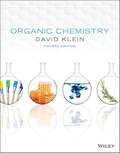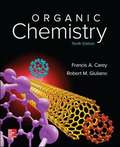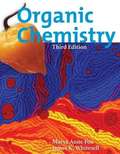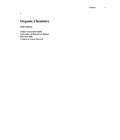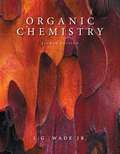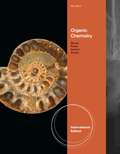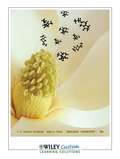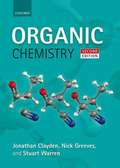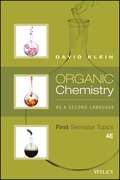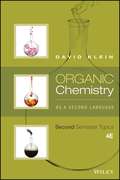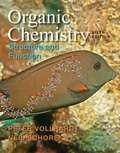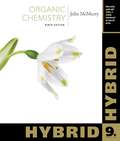- Table View
- List View
Oregon Adventures in Time and Place
by James A. Banks Walter C. Parker Gloria Ladson-Billings Barry K. Beyer Gloria Contreras Jean Craven Mary A. McfarlandHistory of Oregon
Oregon Focus on Data Analysis [Stage 3]
by Beth Armstrong Matt Mccaw Shannon MccawNIMAC-sourced textbook
Oregon Focus on Fractions and Decimals [Stage 1]
by Beth Armstrong Matt Mccaw Shannon MccawNIMAC-sourced textbook
Oregon Focus on Introductory Algebra [Stage 1]
by Beth Armstrong Matt Mccaw Shannon MccawNIMAC-sourced textbook
Oregon Focus on Introductory Algebra, Teacher Resources, Student Materials [Stage 1]
NIMAC-sourced textbook
Oregon Focus on Linear Equations [Stage 3]
by Beth Armstrong Matt Mccaw Shannon MccawNIMAC-sourced textbook
Oregon Focus on Lines & Angles [Stage 3]
by Beth Armstrong Matt Mccaw Shannon MccrawNIMAC-sourced textbook
Oregon Focus on Proportionality [Stage 2]
by Beth Armstrong Matt Mccaw Shannon MccawNIMAC-sourced textbook
Oregon Focus on Rational Numbers & Equations [Stage 2]
by Beth Armstrong Matt Mccaw Shannon MccawNIMAC-sourced textbook
Oregon Focus on Ratios, Rates and Percents [Stage 1]
by Beth Armstrong Matt Mccaw Shannon MccrawNIMAC-sourced textbook
Oregon Focus on Surface Area & Volume [Stage 2]
by Beth Armstrong Matt Mccaw Shannon MccrawNIMAC-sourced textbook
Organic Chemistry
by David KleinThe textbook includes important concepts in Organic chemistry, complete with conceptual checkpoints that promote mastery of the concepts, and special emphasis is placed on skills development through Skill Builders to support these concepts.
Organic Chemistry
by David KleinOrganic Chemistry, 4th Edition provides a comprehensive yet accessible treatment of all the essential organic chemistry concepts covered in a two-semester course. Presenting a skills-based approach that bridges the gap between organic chemistry theory and real-world practice, Dr. David Klein makes content comprehensible to students while placing special emphasis on developing their problem-solving skills through applied exercises and activities. This edition is available with the new and improved WileyPLUS--an immersive online environment packed with interactive study tools, strategies, and resources that support different learning styles.
Organic Chemistry
by Francis A. Carey Robert M. GiulianoOrganic Chemistry has been designed to meet the needs of the "mainstream," two-semester, undergraduate organic chemistry course. This best-selling text gives students a solid understanding of organic chemistry by stressing how fundamental reaction mechanisms function and reactions occur.
Organic Chemistry
by Marye Anne Fox James K. WhitesellOrganic Chemistry by Fox and Whitesell is the pioneer in the mechanistic approach. Now in its third volume, this classic and proven pedagogy provides a much better basis for students to retain a knowledge base and extend it to practical applications in other areas of science. The mechanistic approach groups chemical reactions according to how the sequence of changes occurs- their common mechanisms- rather than by functional groups (what category- alcohols, amines, alkenes, etc.). Where appropriate, the text subdivides information based on functional groups. The text covers ALL of basic organic chemistry in the first 14 chapters and reviews the reactions covered in these chapters in chapter 15 on multi-step synthesis. The text also contains extensive coverage of both industrial and biological polymers, and describes molecular basis for drug action.
Organic Chemistry
by Janice Gorzynski SmithSmith's Organic Chemistry continues to breathe new life into the organic chemistry world. This new fifth edition retains its popular delivery of organic chemistry content in a student-friendly format. Janice Smith draws on her extensive teaching background to deliver organic chemistry in a way in which students learn: with limited use of text paragraphs, and through concisely written bulleted lists and highly detailed, well-labeled “teaching” illustrations. The fifth edition features a modernized look with updated chemical structures throughout. Don’t make your text decision without seeing Organic Chemistry, 5th edition by Janice Gorzynski Smith!
Organic Chemistry
by L. G. WadeAcclaimed for its clarity and precision, Wade's Organic Chemistry maintains scientific rigor while engaging students at all levels. Wade presents a logical, systematic approach to understanding the principles of organic reactivity and the mechanisms of organic reactions. This approach helps students develop the problem-solving strategies and the scientific intuition they will apply throughout the course and in their future scientific work. The Eighth Edition provides enhanced and proven features in every chapter, including new Chapter Goals, Essential Problem-Solving Skills and Hints that encourage both majors and non-majors to think critically and avoid taking "short cuts" to solve problems. Mechanism Boxes and Key Mechanism Boxes strengthen student understanding of Organic Chemistry as a whole while contemporary applications reinforce the relevance of this science to the real world.
Organic Chemistry (Ninth Edition)
by John McmurryJohn McMurry makes learning of Organic Chemistry as enjoyable as he experienced while writing this book.
Organic Chemistry (Sixth Edition)
by Eric Anslyn William Henry Brown Brent L. Iverson Christopher S. FooteRenowned for its unified mechanistic themes, emphasis on biological examples, use of applied problems from the pharmaceutical field, and unrivaled full-color visuals, ORGANIC CHEMISTRY, Sixth Edition, delivers cutting-edge coverage packed with reader-friendly features. Offering a clear presentation, the book offsets reaction mechanisms in a stepwise fashion and emphasizes similarities between related mechanisms, using just four different characteristics: breaking a bond, making a new bond, adding a proton and taking a proton away.
Organic Chemistry 10th Edition
by T. W. Graham Solomons Craig B. FryhleThe Tenth Edition of Organic Chemistry continues Solomons/Fryhle's tradition of excellence in teaching and preparing students for success in the organic classroom and beyond. A central theme of the authors' approach to organic chemistry is to emphasize the relationship between structure and reactivity. To accomplish this, the text is organized in a way that combines the most useful features of a functional group approach with one largely based on reaction mechanisms. The authors' philosophy is to emphasize mechanisms and their common aspects as often as possible, and at the same time to use the unifying features of functional groups as the basis for most chapters. The structural aspects of the authors' approach show students what organic chemistry is. Mechanistic aspects of their approach show students how it works. And wherever an opportunity arises, the authors' show students what it does in living systems and the physical world around us. In the 10th edition, virtually every aspect of the teaching and learning solution has been revisited and redesigned to assist students in comprehending the fundamentals of organic chemistry. The authors' thoroughly explain and illustrate each new idea when it is first introduced and then reinforce the new idea or concept by having students work related problems.
Organic Chemistry 2nd Edition
by Stuart Warren Jonathan Clayden Nick GreevesLike the first, the second edition is built on three principles: An explanatory approach, through which the reader is motivated to understand the subject and not just learn the facts; A mechanistic approach, giving the reader the power to understand compounds and reactions never previously encountered; An evidence-based approach, setting out clearly how and why reactions happen as they do, giving extra depth to the reader's understanding.
Organic Chemistry As A Second Language: First Semester Topics
by David R. KleinOrganic Chemistry may be challenging, but that doesn't mean you can't get the grade you want. With David Klein's Organic Chemistry as a Second Language: Translating the Basic Concepts, you'll be able to better understand fundamental principles, solve problems, and focus on what you need to know to succeed. <P><P> Here's how you can get a better grade in Organic Chemistry: <P><P> <P><P>Understand the Big Picture. Organic Chemistry as a Second Language points out the major principles in Organic Chemistry and explains why they are relevant to the rest of the course. By putting these principles together, you'll have a coherent framework that will help you better understand your textbook. <P><P> <P><P>Study More Efficiently and Effectively Organic Chemistry as a Second Language provides time-saving study tips and a clear roadmap for your studies that will help you to focus your efforts. <P><P> <P><P>Improve Your Problem-Solving Skills <P><P>Organic Chemistry as a Second Language will help you develop the skills you need to solve a variety of problem types-even unfamiliar ones!
Organic Chemistry As A Second Language: Second Semester Topics
by David KleinReaders continue to turn to Klein's Organic Chemistry As a Second Language: Second Semester Topics, 4th Edition because it enables them to better understand fundamental principles, solve problems, and focus on what they need to know to succeed. The fourth edition explores the major principles in the field and explains why they are relevant. It is written in a way that clearly shows the patterns in organic chemistry so that readers can gain a deeper conceptual understanding of the material. Topics are presented clearly in an accessible writing style along with numerous hands-on problem solving exercises.
Organic Chemistry Structure and Function
by K. Peter C. Vollhardt Neil E. SchoreWith authors who are both accomplished researchers and educators, Vollhardt and Schore's Organic Chemistry is proven effective for making contemporary organic chemistry accessible, introducing cutting-edge research in a fresh, student-friendly way. A wealth of unique study tools help students organize and understand the substantial information presented in this course. And in the sixth edition, the themes of understanding reactivity, mechanisms, and synthetic analysis to apply chemical concepts to realistic situations has been strengthened. New applications of organic chemistry in the life sciences, industrial practices, green chemistry, and environmental monitoring and clean-up are incorporated. This edition includes more than 100 new or substantially revised problems, including new problems on synthesis and green chemistry, and new "challenging" problems.
Organic Chemistry, Hybrid Ninth Edition
by John McmurryMaster organic chemistry with the help of this proven best-seller! John McMurry's ORGANIC CHEMISTRY is consistently praised as the most clearly written book available for the course.


